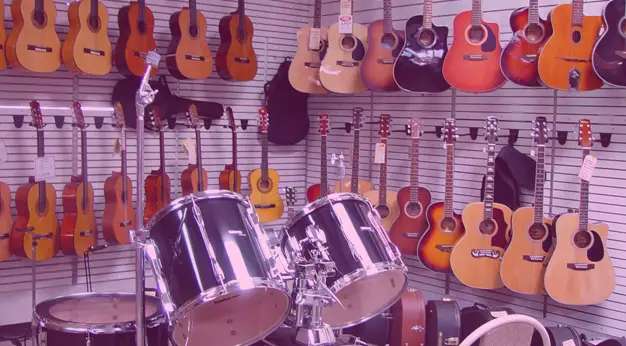Introduction
Learning to play the piano is a rewarding and fulfilling journey. One of the most important skills to acquire is the ability to play different chords. In this article, we will focus on one particular chord: G. The G chord is a fundamental chord in many songs across various genres. Whether you’re a beginner or an experienced pianist looking to expand your repertoire, mastering the G chord will greatly enhance your playing abilities. In this comprehensive guide, we will break down the steps, provide useful tips, and answer common questions on how to play G on the piano.
Table of Contents
- What is the G chord?
- Understanding piano notation
- Hand positioning for the G chord
- Playing the G chord
- Common variations of the G chord
- Songs that utilize the G chord
- Practicing the G chord
- Tips for mastering the G chord
- Frequently Asked Questions
- FAQ 1: What fingers should I use to play the G chord?
- FAQ 2: Can I play the G chord in different inversions?
- FAQ 3: Is it necessary to memorize the G chord in all keys?
- FAQ 4: Are there any alternative fingerings for the G chord?
- FAQ 5: How can I transition smoothly between chords involving G?
- FAQ 6: Can I play the G chord on a digital piano or keyboard?
- Conclusion
What is the G chord?
The G chord is a triad consisting of the notes G, B, and D. It is classified as a major chord and is widely used in various musical compositions. In the context of the piano, the G chord is played by pressing down the keys corresponding to these three notes simultaneously. By mastering the G chord, you open up a world of possibilities for playing countless songs in different genres, including pop, rock, jazz, and classical.
Understanding piano notation
Before diving into playing the G chord, it is essential to understand piano notation. Musical notation provides a visual representation of the music, allowing pianists to read and interpret the music accurately. The notes of the piano are represented by letters from A to G, with the black keys indicated by sharps (#) or flats (♭) depending on the key signature. Familiarize yourself with the layout of the piano keys and the corresponding notes to navigate the keyboard with ease.
Hand positioning for the G chord
Proper hand positioning is crucial for playing the piano effectively and preventing strain or injury. When playing the G chord, place your right hand on the keys with your thumb (1) on G, your middle finger (3) on B, and your fifth finger (5) on D. Your fingers should be slightly curved, relaxed, and hovering above the keys. Maintain a relaxed posture and avoid tension in your shoulders and arms. For the left hand, the positioning is reversed, with the fifth finger (5) on G, the middle finger (3) on B, and the thumb (1) on D.
Playing the G chord
Now that you understand hand positioning, let’s learn how to play the G chord. With your right hand in position, press down the keys G, B, and D simultaneously. Aim for a clean and balanced sound, ensuring that each note rings out clearly. Start by playing the chord slowly, focusing on accuracy and coordination between your fingers. Gradually increase the speed as you become more comfortable with the chord.
Common variations of the G chord
While the standard G chord is an excellent starting point, there are several variations that you can explore to add flavor and complexity to your playing. Some common variations of the G chord include:
- G/B: This chord is played by keeping the G as the bass note (played with the fifth finger) while using the second finger to press down the B key.
- G/D: In this variation, the G chord retains the same hand position, but the D note becomes the bass note. Use your thumb to press down the D key.
- G/F#: The G chord with an added F# note creates a rich sound. Place your thumb on the F# key while maintaining the same hand position as the standard G chord.
Experiment with these variations and discover how they can elevate your piano playing.
Songs that utilize the G chord
The G chord is prevalent in a wide range of songs across different genres. Here are a few examples of popular songs that utilize the G chord:
- “Let It Be” by The Beatles
- “Hallelujah” by Leonard Cohen
- “Clocks” by Coldplay
- “Don’t Stop Believin'” by Journey
- “Wonderwall” by Oasis
By learning the G chord, you’ll be able to play these iconic songs and many more.
Practicing the G chord
Like any skill, practice is essential for mastering the G chord. Set aside dedicated practice time each day to work on your technique. Start by playing the G chord slowly and accurately, ensuring that each note sounds clear. Gradually increase the speed as you gain proficiency. Practice transitioning between the G chord and other chords to develop fluidity in your playing. Incorporate the G chord into scales, arpeggios, and song progressions to further enhance your skills.
Tips for mastering the G chord
Here are some helpful tips to improve your proficiency in playing the G chord:
- Relax your hand: Maintain a relaxed hand position to facilitate fluid movement between the notes of the chord.
- Use proper fingering: Follow the recommended finger placement (1-3-5 for the right hand, 5-3-1 for the left hand) for optimal reach and dexterity.
- Practice muscle memory: Repeat the chord progression regularly to build muscle memory and enhance your playing accuracy.
- Play along with recordings: Jamming along with songs that incorporate the G chord can improve your sense of rhythm and timing.
- Utilize a metronome: Practice with a metronome to develop a steady tempo and improve your timing.
- Take breaks: Don’t overexert yourself. Take regular breaks during practice sessions to prevent fatigue and maintain focus.
By incorporating these tips into your practice routine, you’ll make significant progress in mastering the G chord.
Frequently Asked Questions
FAQ 1: What fingers should I use to play the G chord?
To play the G chord, use your thumb (1), middle finger (3), and fifth finger (5) for the right hand. For the left hand, use the fifth finger (5), middle finger (3), and thumb (1).
FAQ 2: Can I play the G chord in different inversions?
Yes, the G chord can be played in different inversions. Inversions involve changing the order of the notes while retaining the G as the root note. Experiment with different inversions to create unique sounds and progressions.
FAQ 3: Is it necessary to memorize the G chord in all keys?
While it’s beneficial to memorize the G chord in all keys, focusing on the most commonly used keys will suffice for most songs. As you progress, you can gradually expand your chord vocabulary.
FAQ 4: Are there any alternative fingerings for the G chord?
Yes, there are alternative fingerings for the G chord. Explore different fingerings to find what feels comfortable and allows for smooth transitions between chords.
FAQ 5: How can I transition smoothly between chords involving G?
Smooth chord transitions come with practice. Start by isolating the chord changes and practicing them slowly. Gradually increase the speed and incorporate them into songs or progressions.
FAQ 6: Can I play the G chord on a digital piano or keyboard?
Yes, you can play the G chord on a digital piano or keyboard. The finger positioning remains the same, regardless of the instrument.
Conclusion
Congratulations on taking the first steps toward mastering the G chord on the piano. Remember, practice is key to developing proficiency, so make sure to dedicate regular time to practice and explore the various tips and techniques outlined in this guide. With dedication and perseverance, you’ll soon be playing the G chord confidently and incorporating it into your favorite songs. So, grab your piano and start exploring the world of music that awaits you with the beautiful G chord!



